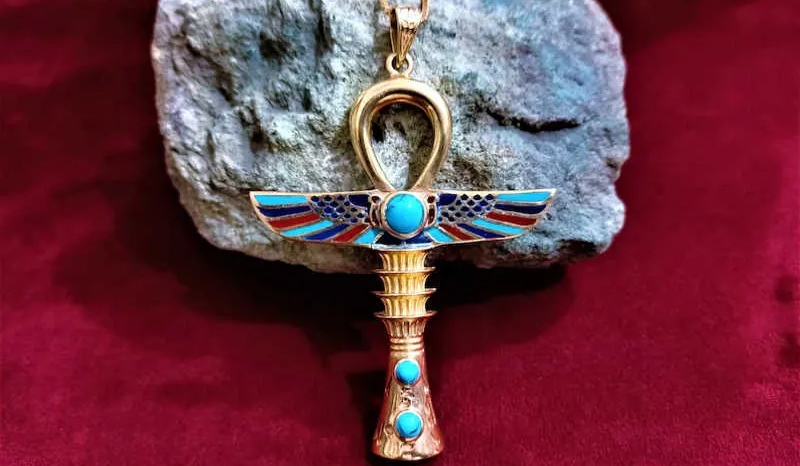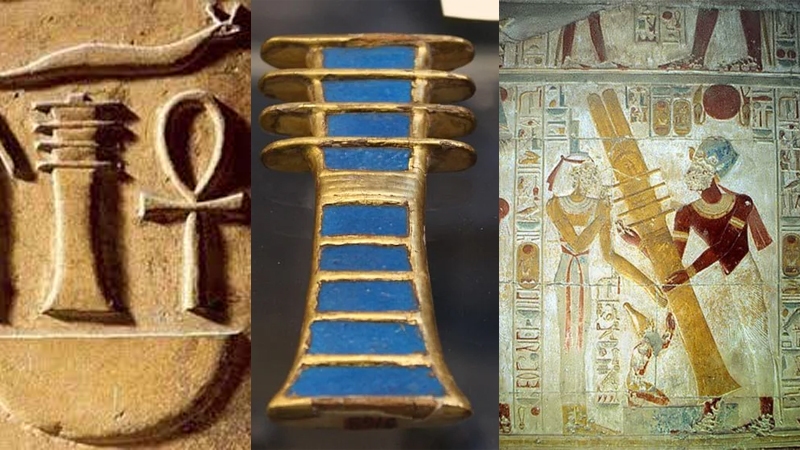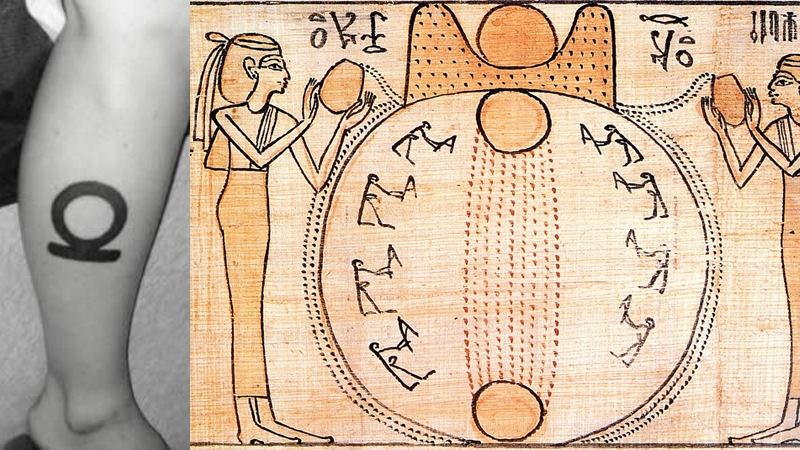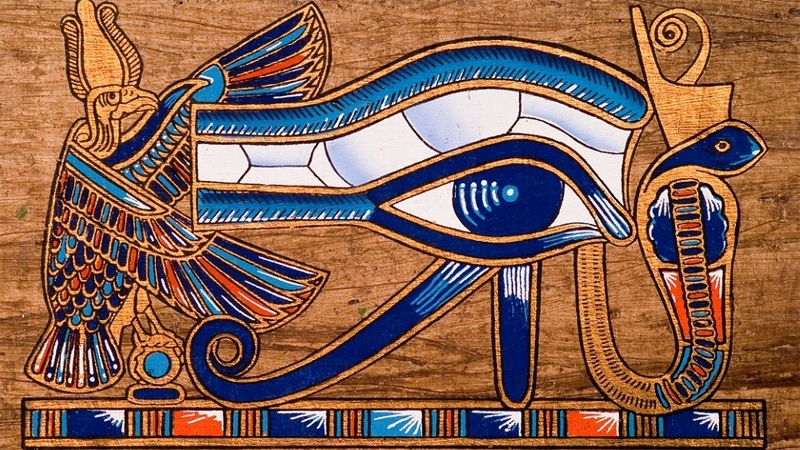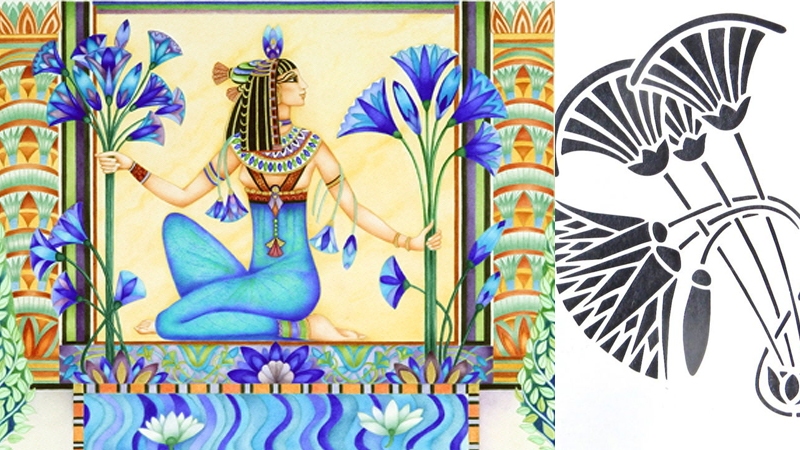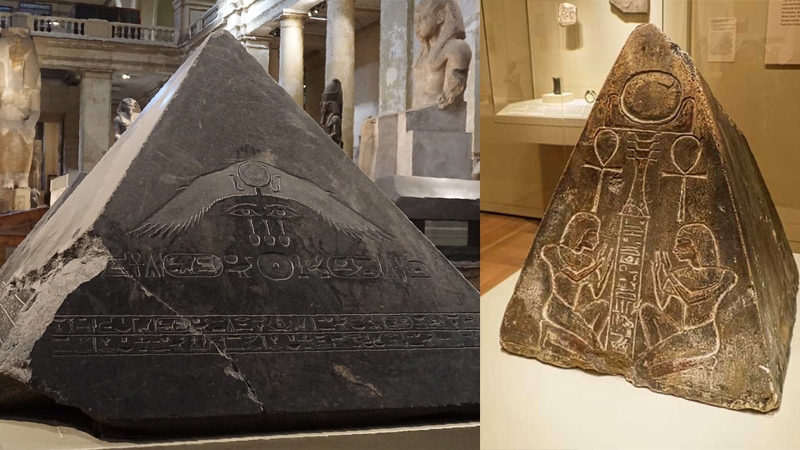6 Important Ancient Egyptian Symbols
Religion in ancient Egypt was fully integrated into the people’s daily lives. The gods were present at one’s birth, throughout one’s life, in the transition from earthly life to the eternal, and continued their care for the soul in the afterlife of the Field of Reeds. The spiritual world was ever present in the physical world and this understanding was symbolized through images in art, architecture, in amulets, statuary, and the objects used by nobility and clergy in the performance of their duties. Some of the most important ancient Egyptian symbols were:
- Ankh
- Djed
- Was Scepter
- Numbers
- Scarab
- Tjet
- Crook & Flail
- Shen
- Udjat Eye
- Sesen
- Ben-Ben
Symbols in a largely illiterate society serve the vital purpose of relaying the most important values of the culture to the people generation after generation, and so it was in ancient Egypt. The peasant farmer would not have been able to read the literature, poetry, or hymns that told the stories of his gods, kings, and history but could look at an obelisk or a relief on a temple wall and read them there through the symbols used.
Also Checkout:
Importnt Ancient Egyptian Symbols
The three most important ancient Egyptian symbols, often appearing in all manner of Egyptian artwork from amulets to architecture, were the ankh, the djed, and the scepter. These were frequently combined in inscriptions and often appear on sarcophagi together in a group or separately. In the case of each of these, the form represents the eternal value of the concept: the ankh represented life; the djed stability; the was power. Scholar Richard H. Wilkinson, noting the importance of form-as-function, relates the following:
The Ankh
The ankh is a cross with a looped top which, besides the concept of life, also symbolized eternal life, the morning sun, the male and female principles, the heavens, and the earth. Its form embodied these concepts in its key-like shape; in carrying the ankh, one was holding the key to the secrets of existence.
The union of opposites (male and female, earth and heaven) and the extension of earthly life to eternal, time to eternity, were all represented in the form of the looped cross. The symbol was so potent, and so long-lived in Egyptian culture (dating from the Early Dynastic Period in Egypt, c. 3150-c. 2613 BCE), that it is no surprise it was appropriated by the Christian faith in the 4th century CE as a symbol for their god.
The origin of the ankh symbol is unknown, but Egyptologist E. A. Wallis Budge claims it may have developed from the tjet, the ‘Knot of Isis,’ a similar symbol with the arms at its sides associated with the goddess. Female deities were as popular, and seem to be considered more powerful (as in the example of the goddess Neith), in the early history of Egypt, and perhaps the ankh did develop from the tjet, but this theory is not universally accepted.
The ankh was closely associated with the cult of Isis, however, and as her popularity grew, so did that of the symbol. Many different gods are depicted holding the ankh and it appears, along with the djed symbol, in virtually every kind of Egyptian artwork from sarcophagi to tomb paintings, palace adornments, statuary, and inscriptions. As an amulet, the ankh was almost as popular as the scarab and the djed.
The Djed
The djed is a column with a broad base narrowing as it rises to the capital and is crossed by four parallel lines. It first appears in the Predynastic Period in Egypt (c. 6000-c. 3150 BCE) and remains a staple of Egyptian iconography through the Ptolemaic Period (323-30 BCE), the last to rule the country before the coming of Rome. Although understood as representing stability, the symbol served to remind one of the close presence of the gods as it also referenced the god Osiris and so was linked with resurrection and eternal life. The djed was thought to represent the god’s backbone and frequently appears on the bottom of sarcophagi in order to help the newly arrived soul stand up and walk into the afterlife.
The symbol has also been interpreted as four columns rising behind each other, the tamarisk tree in which Osiris is enclosed in his most popular myth, and a fertility pole raised during festivals, but in each case, the message of the form goes back to the stability in life and hope in the afterlife, provided by the gods.
In the interpretation of the symbol as four columns, the number most frequently appearing in Egyptian iconography is represented: four. The number symbolized completeness and is seen in art, architecture, and funerary goods such as the Four Sons of Horus of the canopic jars, the four sides of a pyramid, and so on. The other interpretations likewise symbolize concepts associated with the Osiris-Isis myth. The djed as the tamarisk tree speaks of rebirth and resurrection as, in the myth, the tree holds Osiris until he is freed and brought back to life by Isis. The fertility pole is also associated with Osiris who caused the waters of the Nile River to rise, fertilize the land, and flow again to its natural course. In each case, whatever object it is claimed to represent, the djed was a very powerful symbol which was often coupled with another: the scepter.
The Shen
The shen is a circle of rope, knotted, to form an unbroken, circle symbolizing completeness, infinity, and serving as protection. The name comes from the Egyptian word for ‘encircle.’ Shen amulets were frequently worn for protection and shen images appear on a kind of stand, the whole resembling the Greek omega, though this ‘stand’ should be understood as the knotted rope completing the circle.
The shen probably developed during the Old Kingdom or First Intermediate Period of Egypt but became popular during the Middle Kingdom (2040-1782 BCE) and remained so. The god Horus and the goddesses Nekhbet and Isis are frequently seen holding the shen but other gods are also associated with the symbol. The shen appears on sarcophagi and in temples and tombs as well as in personal inscriptions. The Egyptians greatly valued symmetry and completeness, and so the shen was quite popular and often represented.
The Udjat Eye
The udjat is another well-known symbol from Egypt: the Eye of Ra. The symbol of the eye is associated with the protective goddess Wadjet during the Predynastic Period and continued to be even though it was later more regularly linked to Horus, Ra, and others through the motif of the Distant Goddess.
The distant goddess story has many forms in Egyptian mythology but one consistent plot: a goddess in some way rebels against the king of the gods, leaves her home and responsibilities behind to journey to a far-off land, and must be brought back (or tricked into returning) thus initiating some kind of transformation. The udjat either represented the goddess or was sent to retrieve her and could take many forms. As the Eye of Ra it was understood to symbolize his watchful presence over creation and is frequently depicted in myths (like those of the distant goddess) being sent forth to gather information for Ra. The udjat remained a consistently potent symbol throughout Egypt’s history.
The Sesen
The sesen is the lotus flower that appears so often in Egyptian art and symbolizes life, creation, rebirth, and, especially, the sun. The symbol dates to the Early Dynastic Period but became most popular from the Old Kingdom onwards. The lotus flower closes in the evening and sinks down beneath the water, then at daybreak, it emerges to open again; this pattern identified it with the sun and, therefore, with life.
The flower also represented rebirth for the same reason and was associated with the god Osiris. The Four Sons of Horus, regularly represented on canopic jars, are often depicted standing together on a lotus in the presence of Osiris. The lotus flower appears in many different types of Egyptian art from faience statuary to sarcophagi, temples, shrines, and on amulets. It was the symbol of Upper Egypt as the papyrus plant symbolized Lower Egypt and the flower is sometimes depicted with its stem entwined with that of the papyrus plant.
The Ben-Ben
The ben-ben was the primordial mound upon which the god Atum stood at the beginning of creation. It is easily the best-known symbol from ancient Egypt, after the ankh, even if one does not recognize the name. The pyramids of Egypt, wherever one finds them and from any age, represent the ben-ben as they rise from the earth toward the heavens.
You may have noticed that some people still use these ancient Egyptian symbols in their life as a tattoo, art, jewelry, etc.


